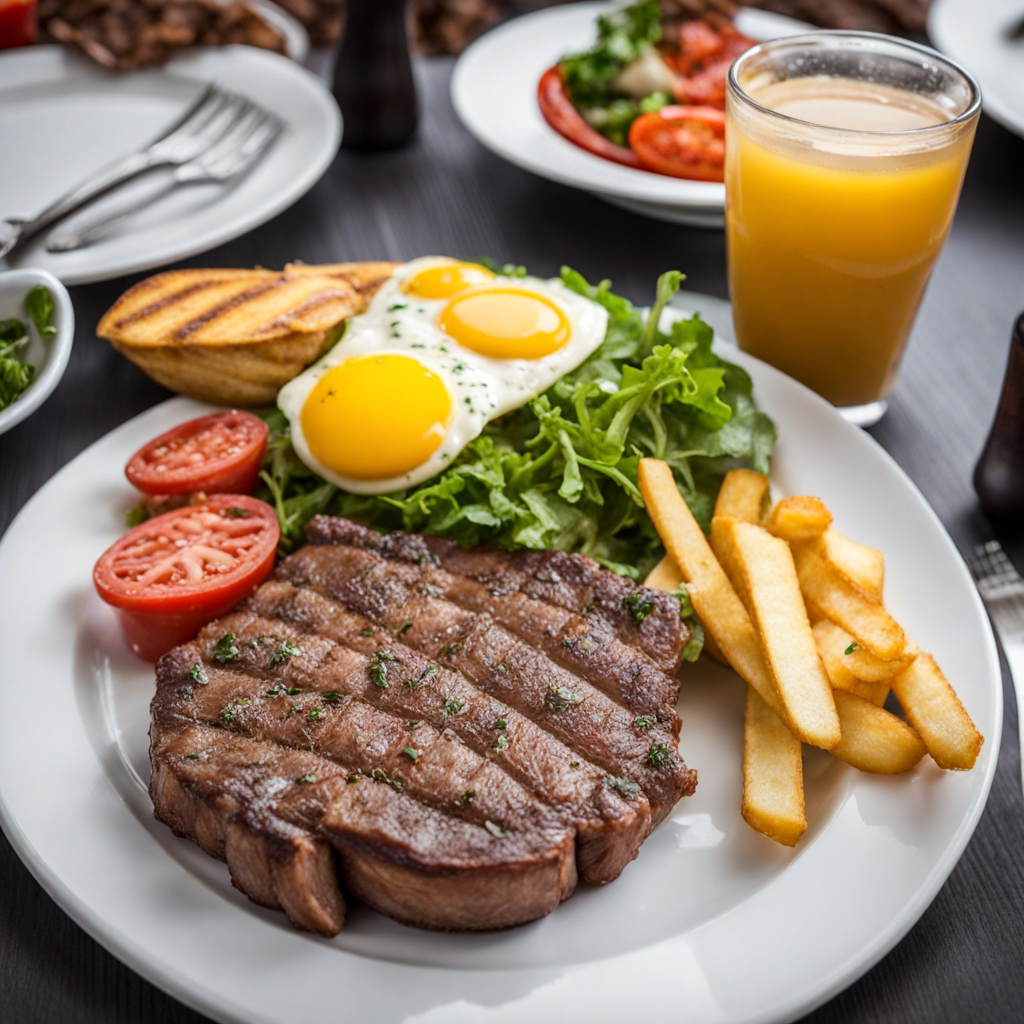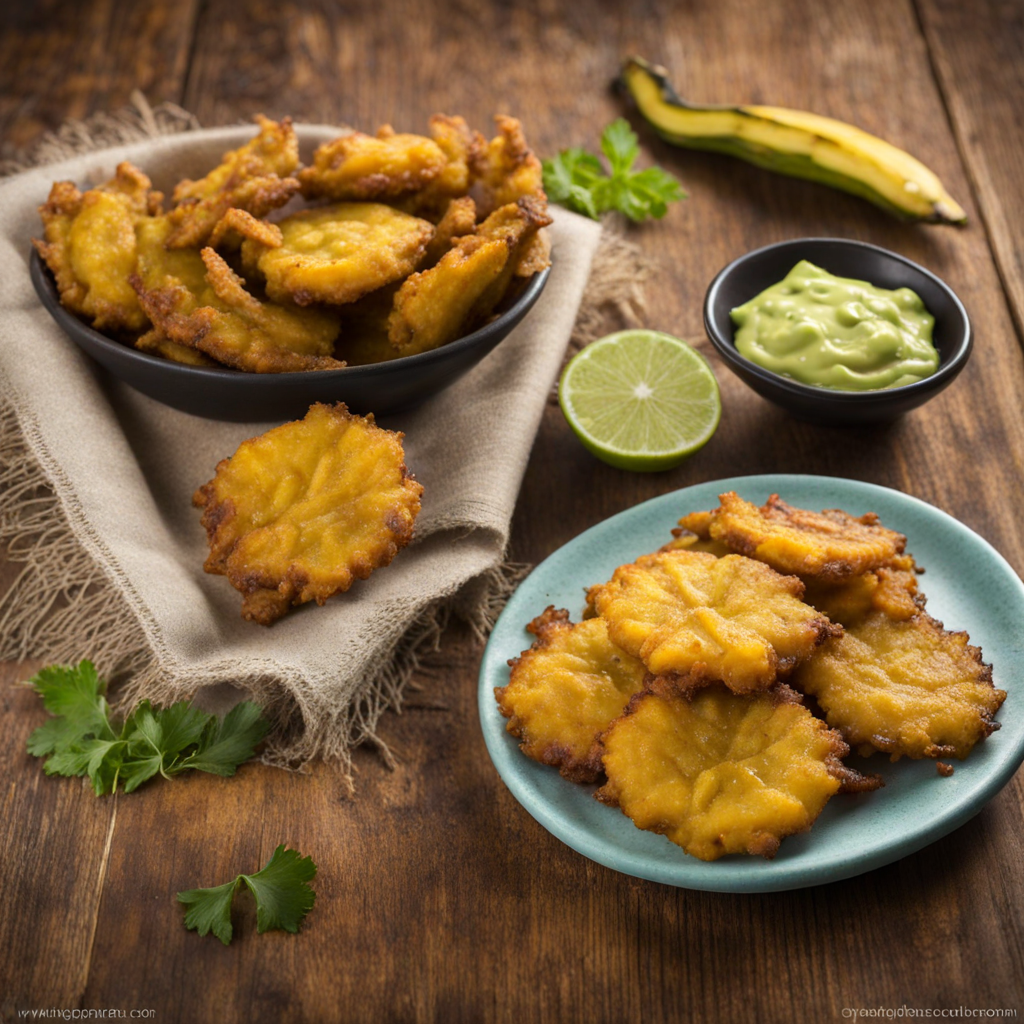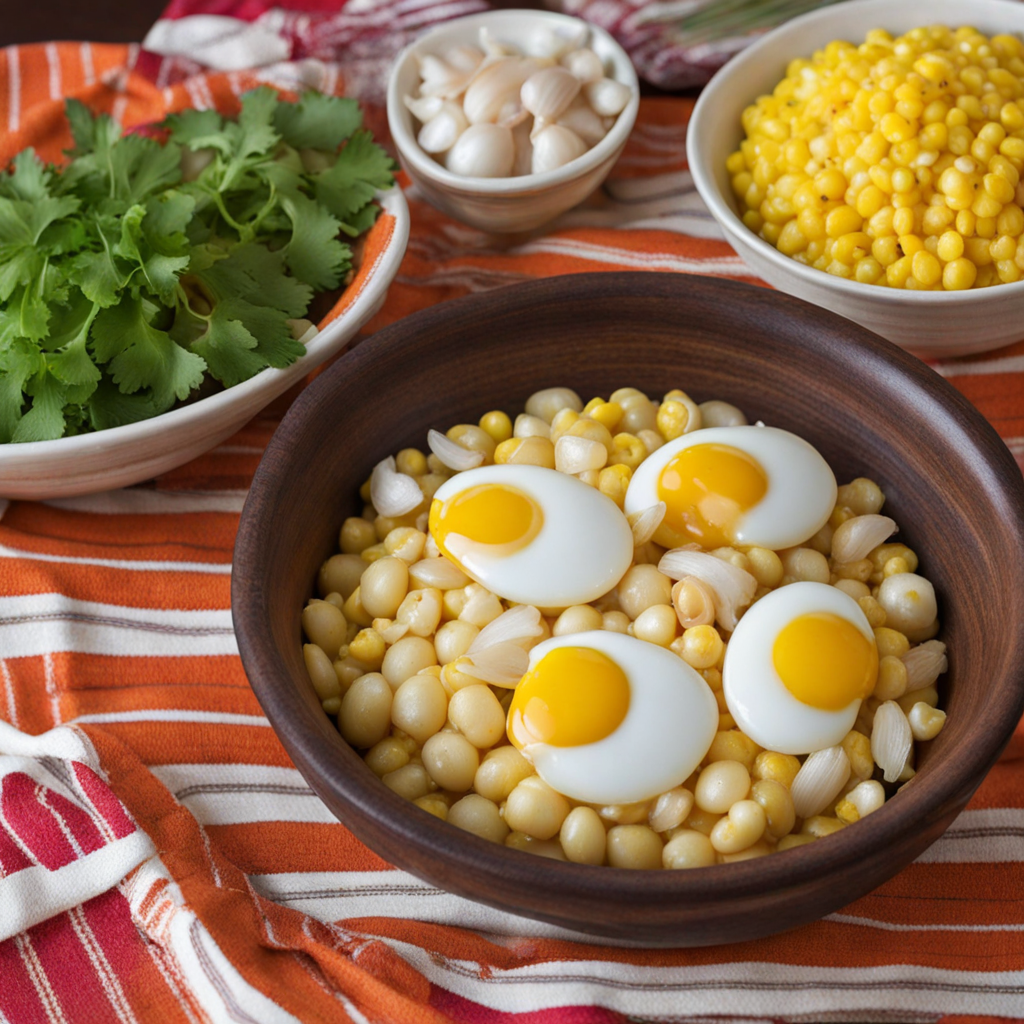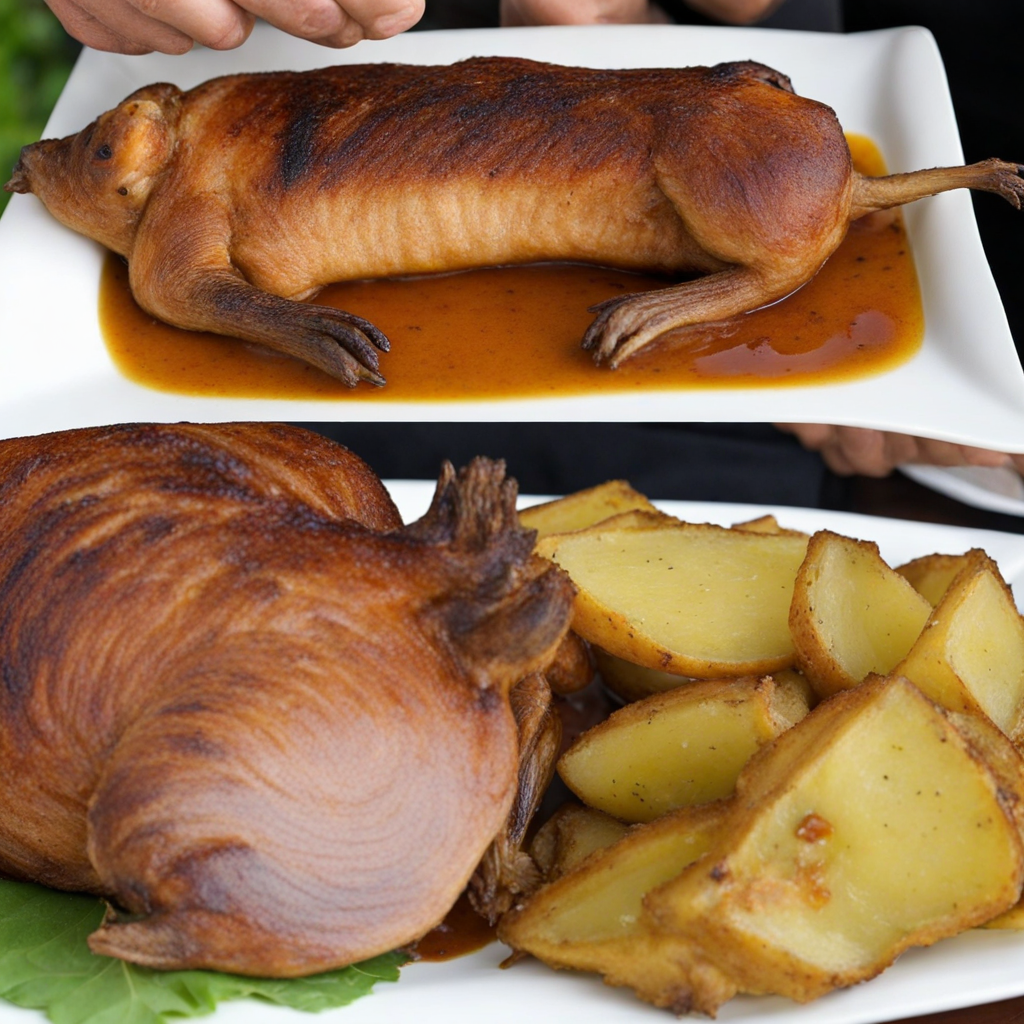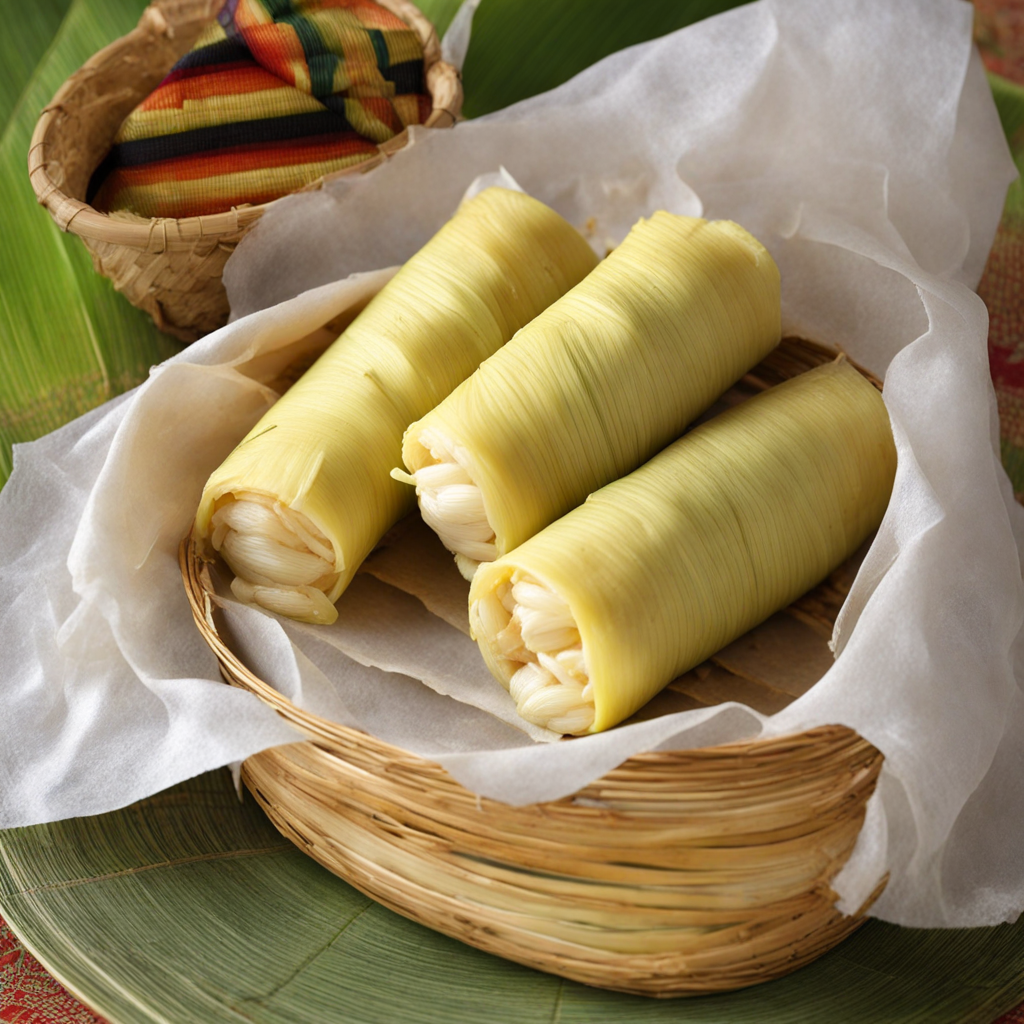Churrasco Ecuatoriano
Churrasco Ecuatoriano is a vibrant and hearty dish that captures the essence of Ecuadorian culinary traditions. At its core, this dish features a generous portion of grilled or pan-fried beef, often marinated with a blend of spices that enhances its natural flavors. The beef is typically served thinly sliced, allowing for a tender, juicy bite that delights the palate. The preparation process often involves grilling over an open flame, which adds a smoky depth to the meat that is truly irresistible. Accompanying the star of the dish are a variety of colorful and flavorful sides that elevate the overall experience. A classic accompaniment is a bed of fragrant rice, which absorbs the savory juices from the beef. Additionally, fried eggs are often placed atop the meat, creating a rich, creamy contrast. The dish is also served with avocado slices, fresh tomato, and a tangy salsa known as "ají," made from chili peppers, cilantro, and lime, providing a refreshing kick that balances the richness of the beef. Churrasco Ecuatoriano is more than just a meal; it is a celebration of flavors and textures that reflects the warmth of Ecuadorian culture. The combination of savory beef, vibrant sides, and the spicy-sour notes of the ají makes for a dish that is both satisfying and exciting to the taste buds. Whether enjoyed at a local eatery or prepared at home, Churrasco Ecuatoriano is an invitation to experience the delicious heart of Ecuadorian cuisine.
How It Became This Dish
The Flavors of Ecuador: A Journey Through Churrasco Ecuatoriano #### Origins Churrasco Ecuatoriano, a beloved dish in Ecuador, is a vibrant celebration of the country's culinary heritage, combining influences from indigenous, Spanish, and African traditions. The term "churrasco" is derived from the Spanish word for grilled meat, and in Ecuador, it typically refers to a hearty dish featuring a grilled beef steak, often served alongside rice, fried eggs, avocado, and a fresh salad. The origins of churrasco can be traced back to the Spanish colonial period in the 16th century when European settlers brought with them their culinary practices and livestock, including cattle. This introduction had a profound impact on the local diet. Indigenous peoples, who had primarily relied on crops like corn, potatoes, and quinoa, began incorporating beef into their meals. The grilling technique was adopted from the Spanish, who were fond of cooking meats over an open flame, a practice that resonates deeply with the grilling traditions found throughout Latin America. #### Cultural Significance Churrasco Ecuatoriano is more than just a meal; it is a symbol of togetherness and celebration in Ecuadorian culture. It is often served during family gatherings, community festivities, and national holidays, reflecting the importance of communal dining in Ecuadorian society. The dish brings together diverse flavors and ingredients, illustrating the country's rich agricultural bounty. Ecuador's geographical diversity—from the Andes mountains to the coastal plains—means that local ingredients vary widely. In coastal regions, the churrasco may be accompanied by plantains or seafood, while in the highlands, it might feature potatoes or corn. This adaptability not only showcases the regional differences within Ecuador but also highlights the dish's ability to evolve and incorporate local flavors and ingredients over time. #### Development Over Time As Ecuador went through various historical phases, including independence from Spanish rule in the early 19th century, the culinary landscape continued to evolve. The influence of immigration, particularly from Europe and Africa, introduced new cooking techniques, spices, and flavors. African slaves brought to the region contributed to the culinary tapestry, adding elements such as the use of spices and the tradition of grilling meats. In the 20th century, churrasco began to gain popularity beyond its traditional roots, becoming a staple in urban areas, especially in Quito and Guayaquil. Restaurants and roadside eateries started to feature it on their menus, catering to both locals and tourists alike. The dish became synonymous with Ecuadorian street food, often enjoyed by people on the go. Food vendors would grill the meat in open-air markets, filling the air with tantalizing aromas that would draw in passersby. The rise of tourism in Ecuador, particularly in the late 20th and early 21st centuries, also played a significant role in the popularization of churrasco. Tourists seeking to experience authentic Ecuadorian cuisine discovered the dish, leading to its incorporation into travel itineraries and culinary tours. As visitors sampled the robust flavors of churrasco, they contributed to the ongoing evolution of the dish, inspiring chefs to experiment with new ingredients and presentations while maintaining the traditional essence. #### Modern Interpretations In contemporary Ecuador, churrasco Ecuatoriano can be found in a variety of forms, from street stalls to upscale restaurants. While the traditional preparation remains popular, modern chefs have embraced innovation, experimenting with marinades, rubs, and grilling techniques. Some have even begun to incorporate fusion elements, blending traditional Ecuadorian flavors with influences from other cuisines, such as Asian or Mediterranean. One popular variation is the addition of chimichurri sauce—a garlicky, herb-based condiment originally from Argentina. This sauce has made its way into Ecuadorian kitchens, enhancing the flavor profile of churrasco and adding a fresh, zesty element to the dish. Additionally, the use of high-quality cuts of beef, such as ribeye or tenderloin, has become more common in fine dining establishments, elevating churrasco to a culinary art form. Churrasco is also served in a variety of ways, depending on the region and local customs. In some areas, it is complemented with a side of llapingachos (potato patties) or aji (a spicy sauce) for an added kick. This flexibility allows for a unique dining experience, where each plate reflects the locality and the chef's creativity. #### Conclusion Churrasco Ecuatoriano is a dish steeped in history, cultural significance, and culinary evolution. From its humble beginnings as a grilled meat dish during the colonial era to its status as a beloved national staple, churrasco embodies the spirit of Ecuador—a nation rich in diversity, flavor, and tradition. As Ecuadorians continue to adapt and innovate, this dish remains a testament to the country's culinary journey, bridging the past with the present and inviting everyone to savor the flavors of Ecuador. In every bite of churrasco, one can taste the history and passion of a nation that has embraced its roots while welcoming the future. Whether enjoyed at a family gathering or a bustling street market, Churrasco Ecuatoriano is not just food; it is a celebration of Ecuadorian identity, community, and the enduring love for good cooking.
You may like
Discover local flavors from Ecuador


